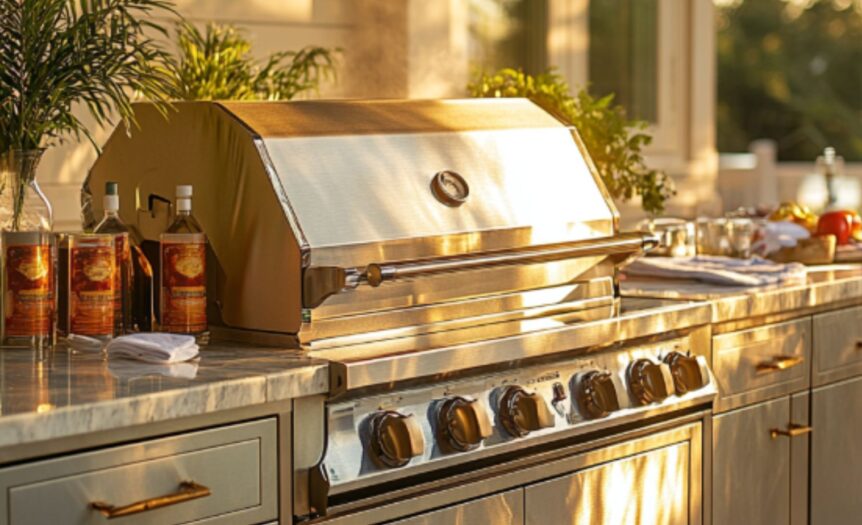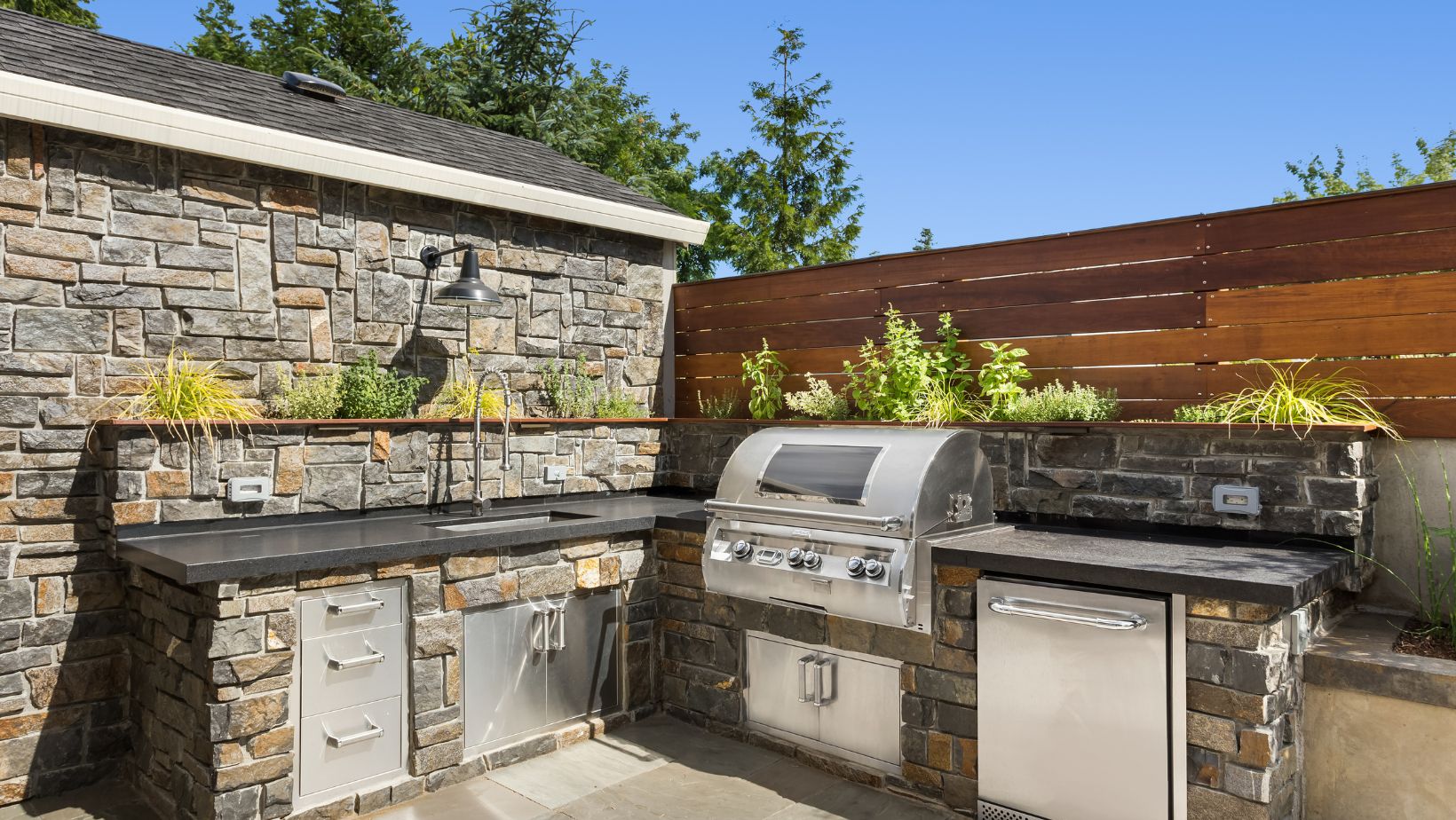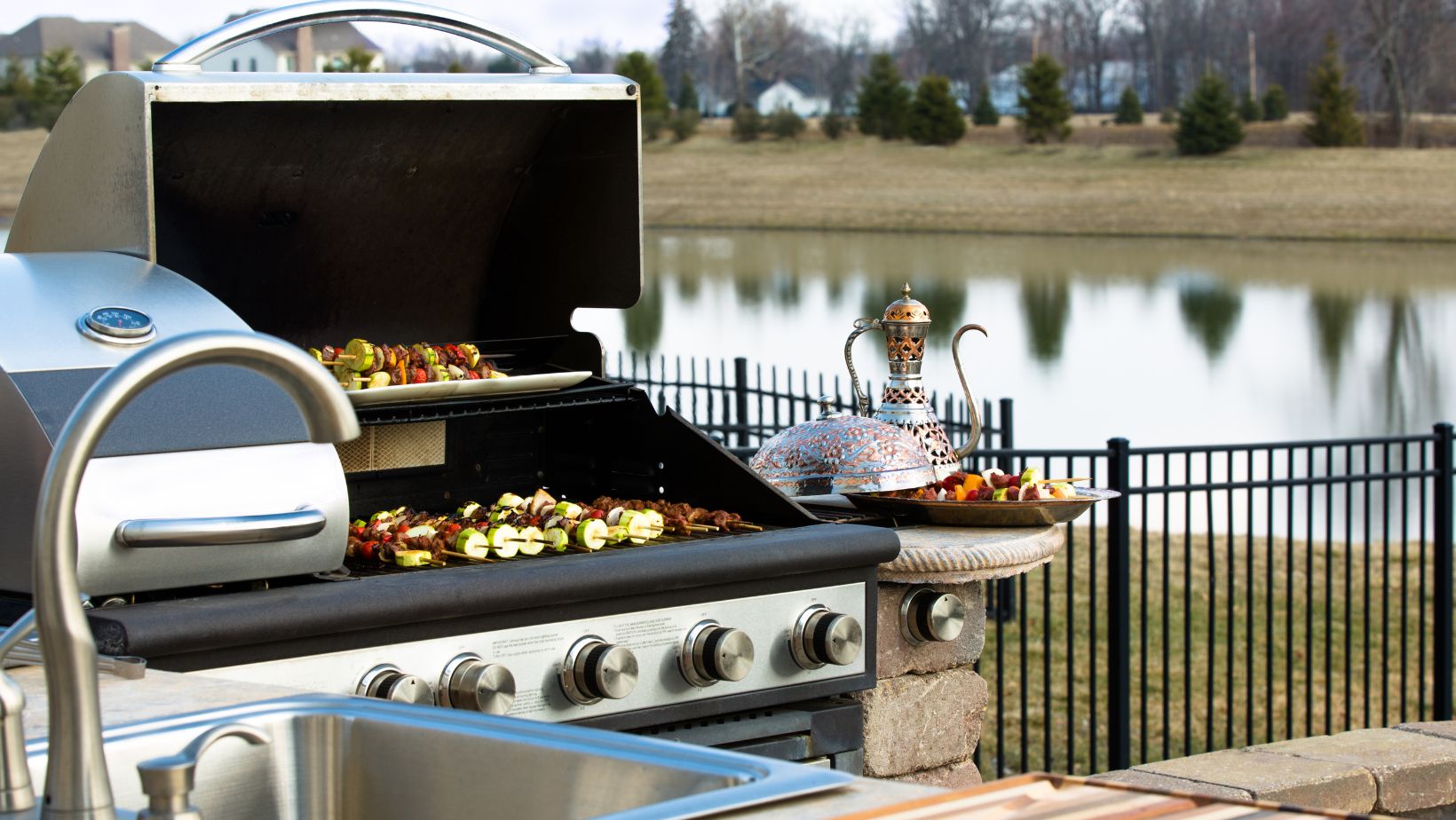When the elements begin taking their toll on your outdoor culinary setup, connecting with a reliable appliance repair company can make the difference between a quick fix and a complete replacement of your expensive grill or refrigerator. Unlike indoor counterparts, outdoor kitchen equipment faces extreme weather conditions that accelerate wear and tear, making it crucial to establish a relationship with a trusted appliance repair company near me that specializes in outdoor installations before emergency situations arise. Implementing a consistent maintenance routine not only extends the life of these investments but also ensures they’re ready to perform when entertaining season arrives, saving both money and stress while maintaining the heart of your outdoor living space that brings together friends and family throughout the year.
The Hidden Enemy: How Weather Impacts Your Outdoor Kitchen
Most homeowners underestimate just how dramatically outdoor conditions affect appliances designed for indoor use that have been modified for outdoor installation. The constant battle against nature’s elements is real and unrelenting.
A neighbor learned this costly lesson last summer when his supposedly “weatherproof” outdoor refrigerator failed during a July heatwave. The culprit? Dust and debris had completely clogged the condenser coils, preventing proper cooling. The repair technician explained that outdoor units require cleaning three times as frequently as indoor models for this very reason.
Think of your outdoor kitchen appliances as athletes competing in extreme conditions while their indoor counterparts exercise in a climate-controlled gym. They’re essentially the same equipment, but facing vastly different challenges that require specialized training and recovery protocols.
Stainless Isn’t Always Stainless: Protecting Metal Surfaces
That beautiful stainless steel grill and refrigerator sold with promises of weather resistance require more attention than the sales pitch implied. “Stainless” doesn’t mean “stainproof” – especially when facing constant humidity, salt air, or chlorine from nearby pools.
After watching outdoor appliances develop rust spots despite regular cleaning, an experienced outdoor entertaining enthusiast discovered the secret: quarterly application of marine-grade stainless protectant. This simple step has preserved the appearance of his outdoor kitchen through five Florida summers, while neighbors have replaced equipment twice in the same timeframe.
Consider metal surfaces in your outdoor kitchen like your skin at the beach – even with built-in protective properties, they still need regular application of the right protective products to prevent damage from environmental exposure.
The Winter Wrap: Seasonal Protection Strategies
For those in regions with true winter seasons, proper equipment hibernation prevents spring repair emergencies and extends appliance life significantly.
A Massachusetts homeowner who religiously follows winter shutdown procedures has maintained the same outdoor kitchen configuration for over a decade in harsh New England conditions. Their process includes not just covers but complete weatherization: disconnecting water lines, applying specialized lubricants to moving parts, and proper electrical disconnection.
Preparing outdoor appliances for winter resembles winterizing a swimming pool – what seems like excessive precaution actually represents essential protection that prevents catastrophic failure. The few hours spent in late fall save thousands in replacement costs and ensure everything works properly when warm weather returns.
Beyond the Grill: Specialized Care for Different Appliance Types
Each component of your outdoor kitchen requires specific maintenance considerations beyond the obvious grill cleaning that most homeowners manage adequately.
Refrigeration Units: The Cooling Challenge
Outdoor refrigeration faces the paradoxical challenge of maintaining cold temperatures while operating in hot environments – a task requiring peak efficiency at all times.
The coils on outdoor refrigerators need monthly cleaning during peak season rather than the annual attention recommended for indoor units. Neglecting this simple maintenance step leads to compressor failure as units struggle to maintain temperature in 90+ degree weather.
The door gaskets also deteriorate faster outdoors due to UV exposure and temperature fluctuations. Replacing these inexpensive parts annually prevents the costly moisture damage that occurs when seals fail and allows humidity inside the unit.
An outdoor refrigerator operates like a marathon runner in desert conditions compared to the casual jogger represented by its indoor equivalent. Both are running, but one requires significantly more hydration and attention to perform the same basic function.
Ice Makers: The Mineral Battle
Outdoor ice makers face a double challenge: extreme operating conditions plus mineral buildup from water supplies.
A pool-side ice maker owner discovered that using filtered water and running a cleaning cycle monthly kept his unit producing crystal-clear ice without the persistent maintenance problems reported by neighbors with identical models. The difference? Preventing mineral scale before it accumulates to problematic levels.
Think of ice maker maintenance like dental hygiene – regular preventive care avoids painful and expensive interventions later. A simple monthly cleaning cycle and water filtration serve as the equivalent of brushing and flossing for these appliances.
Burners and Ignition Systems: Protecting Your Fire Starters
The ignition systems on outdoor grills and burners fail far more frequently than other components due to their vulnerability to moisture and insect intrusion.
After replacing ignition systems on his built-in grill annually, a frustrated outdoor cooking enthusiast consulted with a repair specialist who recommended a simple solution: food-safe dielectric grease applied to connections twice yearly. This inexpensive product creates a moisture barrier that has kept his ignition system functioning flawlessly for three seasons without replacement.
The electrical components in outdoor cooking equipment can be compared to matches – essential for starting the cooking process, but vulnerable to moisture. Proper protection keeps them functional when needed, rather than delivering the frustration of clicking a starter that produces no flame.
The Professional Touch: When to Call in Experts
While regular maintenance prevents many problems, certain situations demand specialized knowledge and tools that most homeowners simply don’t possess.
Gas Line Safety: No Room for Amateur Work
Gas connections require proper testing and certification, which only licensed technicians should perform. A leak test before the season begins ensures safety for your family and guests.
After detecting a faint gas smell near his outdoor kitchen, a cautious homeowner called for professional inspection rather than investigating himself. The technician discovered a connection that had loosened during winter freeze-thaw cycles – a potentially dangerous situation averted through proper testing.
Think of gas system maintenance like electrical work in your home – the risks of amateur attempts far outweigh any potential cost savings. This is one area where professional service represents essential safety rather than optional convenience.
Water System Winterization: Preventing Freeze Damage
Outdoor kitchens with plumbing components require complete drainage and sometimes compressed air blowout to prevent catastrophic freeze damage in colder climates.
A Chicago-area entertainer learned this expensive lesson when spring thaw revealed multiple cracked components in his outdoor sink and ice maker systems. The $3,800 repair bill far exceeded what proper winterization service would have cost.
Water lines in outdoor kitchens are like the pipes in your home, but with greater exposure to freezing temperatures. Professional winterization provides insurance against the significant expense and inconvenience of spring repairs.
The Maintenance Calendar: Seasonal Tasks for Peak Performance
Creating a structured maintenance schedule prevents the “out of sight, out of mind” problem that leads to neglected outdoor kitchens. Breaking tasks into seasonal checklists ensures nothing gets overlooked.
Spring Awakening: The Post-Winter Inspection
Before the outdoor entertaining season begins, a thorough inspection identifies any issues that developed during winter dormancy.
The smartest spring ritual observed among experienced outdoor kitchen owners includes testing each appliance component before planning the first gathering. This approach prevents the disappointment of discovering problems during an event.
Consider spring maintenance like the opening day inspection of a swimming pool – thorough checking prevents unpleasant surprises once guests arrive, ready to enjoy the amenities.
Summer Vigilance: Peak Usage Inspections
During the heavy-use summer season, quick weekly checks prevent minor issues from escalating during the period when your outdoor kitchen sees maximum activity.
A weekly 10-minute inspection routine has saved countless outdoor gatherings from disruption. This process includes checking refrigerator temperatures, cleaning grease traps, and ensuring proper drainage – simple steps that prevent common mid-season failures.
Summer maintenance resembles keeping your car tuned during a long road trip – regular quick checks prevent being stranded at the most inconvenient moment.
Fall Preparation: The Transition Strategy
As the outdoor entertaining season winds down, take specific steps to prepare appliances for either reduced winter use or complete hibernation, depending on your climate.
In transitional seasons, outdoor kitchen enthusiasts in moderate climates perform deep cleaning of all components while checking weather seals and protective covers for damage. This practice extends appliance life significantly compared to those who skip this crucial transitional maintenance.
Think of fall maintenance as preparing your garden for winter – the care you provide during this transition determines how well things will perform when activity resumes in spring.
The DIY vs. Expert Balance: Smart Maintenance Economics
Balancing do-it-yourself maintenance with professional service creates the most cost-effective approach to outdoor kitchen care.
Monthly cleaning and inspection tasks remain well within most homeowners’ capabilities, while gas system certification and complex electrical work justify professional involvement. Understanding this distinction prevents both unnecessary expense and dangerous amateur attempts at technical repairs.
The most successful outdoor kitchen owners maintain a scheduled service relationship with qualified technicians while handling routine cleaning themselves – a balanced approach that optimizes both performance and cost.
Conclusion: Protection Equals Performance
Your outdoor kitchen represents a significant investment that enhances your home’s living space and entertaining capabilities. Protecting this investment through proper maintenance ensures it continues delivering the experiences and memories that made the initial purchase worthwhile.
By understanding the unique challenges outdoor appliances face, implementing a structured maintenance schedule, and knowing when to call professionals, you can enjoy trouble-free outdoor entertaining for many seasons to come. The time invested in proper care pays dividends in reliability, longevity, and performance when you most want your outdoor kitchen to shine.





